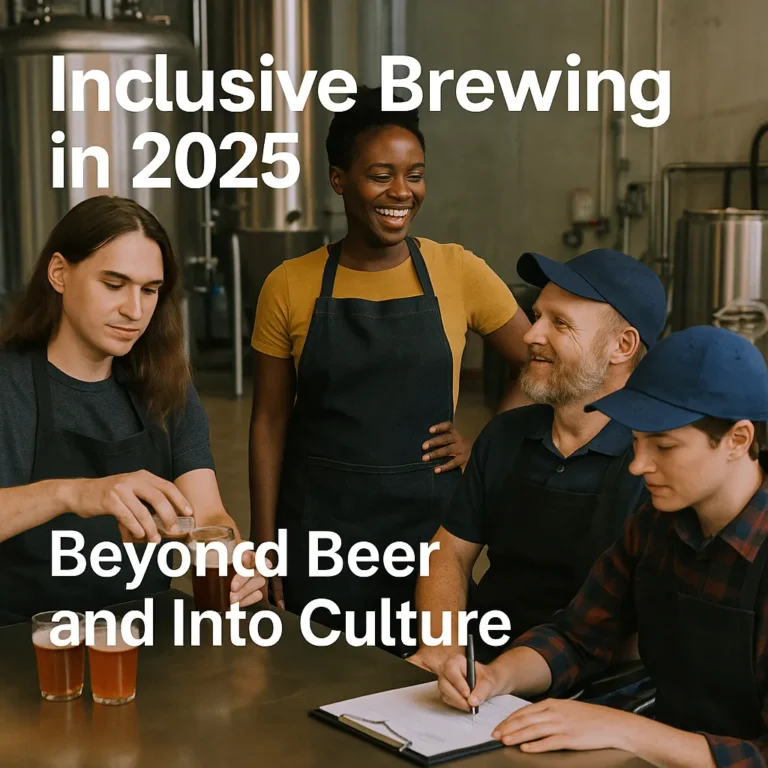A bar that serves beer is never just a bar. It’s a cultural signal tower. Every element—music, staff greetings, bottle labels, restroom design—tells visitors something deeper than what’s on tap. For some, it feels atmospheric. For others, it says: “this place isn’t for you.” In today’s climate, inclusivity doesn’t stop at hiring or marketing—it’s embedded in every detail. These subtle decisions form what’s known as the microculture of a bar. And whether you realize it or not, that microculture is political.
What Shapes the Microculture of a Beer Bar
The vibe of a bar isn’t random. It’s curated through dozens of small, often unconscious decisions. Let’s take a closer look at the key elements that shape how a bar communicates with its guests.
Music: More Than Background Noise
What genres dominate the playlist? Is there representation across cultures, genders, or languages? Songs with sexist, racist, or homophobic lyrics might slip by unnoticed by some—but they’re a hard stop for others. Music in a bar doesn’t just fill silence. It tells people who’s welcome and who isn’t.
Staff Language: It’s Not Just What You Say
Casual greetings like “hey, buddy” or “hey, girl” might seem friendly—but they’re not always appropriate or comfortable. Using gender-neutral terms like “you folks,” “guests,” or “everyone” makes the space feel safer for all identities. Even the tone of voice, jokes, and how questions are asked can either welcome or alienate guests.
Beer Names and Labels: Branding With Responsibility
Take a closer look at your beer names and bottle designs. Are they leaning on tired stereotypes? Do they rely on sexist, colonial, or mocking imagery? The craft beer world has long played with edgy branding—but in 2025, there’s a fine line between clever and harmful. Guests notice.
Interior Design and Layout: Inclusion in the Details
Is the space accessible to those with limited mobility? Are there unspoken zones that feel like “members-only” areas? Does the decor signal a boys’ club vibe or reflect outdated macho culture? True inclusion considers how every body feels in the space—regardless of gender, shape, or appearance. That starts with intentional design.
Atmosphere Sends a Signal: “This Is for You” or “It’s Not”
A beer bar isn’t just a place to grab a drink. It’s a stage for cultural connection—or exclusion. Every choice a manager or owner makes—what gets written on the menu board, what song plays during happy hour, how a new tap handle is styled—acts as a signal. It either affirms that everyone belongs, or it reaffirms patterns of exclusion.
Microculture is like a hidden language. And every guest reads it.
What Owners and Managers Can Do Right Now
It’s not about turning every bar into a political statement. It’s about making space for more people to feel at ease. Here are five immediate steps bar owners can take to shift toward inclusivity:
| Action | Effect |
|---|---|
| Revise names and labels | Avoids offensive or outdated imagery and messaging |
| Refresh playlists | Brings in diverse cultural voices and perspectives |
| Train staff in DIE communication | Enhances guest experience for all demographics |
| Improve accessibility and neutral design | Makes the space usable and welcoming for everyone |
| Survey guests regularly | Provides real-world feedback to guide inclusive policies |
These aren’t radical overhauls—they’re small shifts that ripple out.
So What’s in It for the Bar?
A more inclusive bar isn’t just good ethics—it’s good business.
- Loyalty from new audiences. Many younger patrons actively seek out safe, welcoming venues.
- Positive social buzz. Bars that care about their microculture get love on social media and local blogs.
- Partnership potential. Inclusive spaces are more likely to be invited to collaborate with forward-thinking brands, community events, and cultural festivals.
Inclusivity isn’t a trend—it’s a tool. And in a space as personal and social as a bar, it can define not only who walks through your door, but whether they come back. If a place is really for everyone, it should feel like it.


